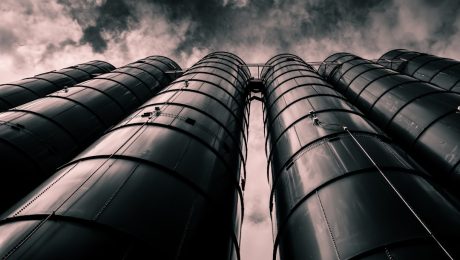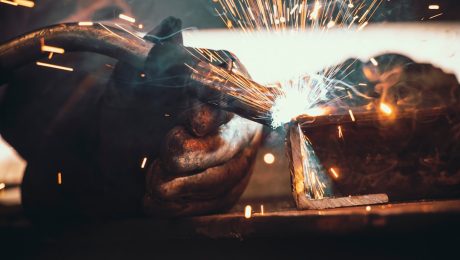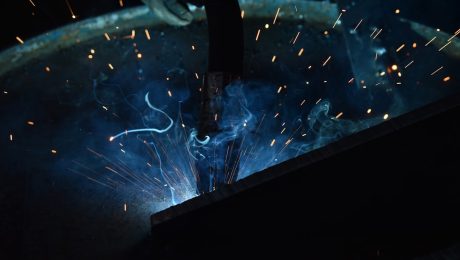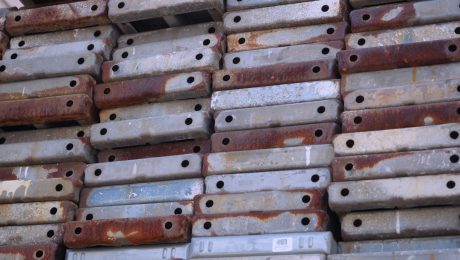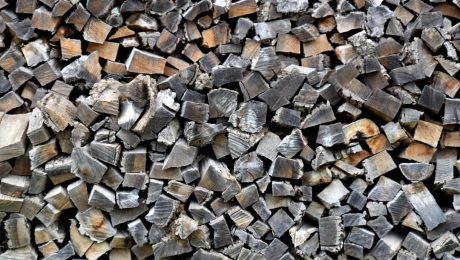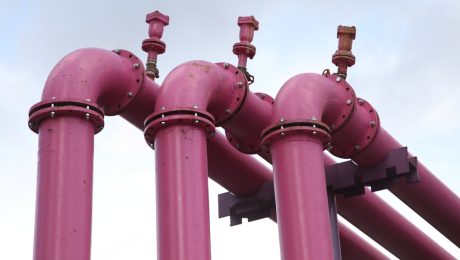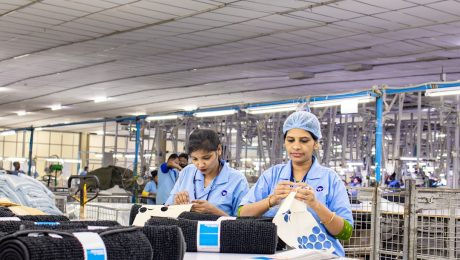Cash. The physical manifestation of value. For centuries, it’s been the cornerstone of global commerce, a tangible representation of wealth and exchange. But in an increasingly digital world, the future of cash is a topic of ongoing debate. This comprehensive guide delves into the multifaceted world of cash, exploring its history, advantages, disadvantages, security concerns, and its potential role in the years to come.
The Historical Reign of Cash: From Barter to Banknotes
The journey of cash is a fascinating one, tracing back millennia. Before the advent of currency, societies relied on barter systems, exchanging goods and services directly. This system proved cumbersome and inefficient, limiting economic growth. The introduction of coins, initially made from precious metals like gold and silver, marked a significant leap forward. These standardized units of value facilitated trade and commerce, allowing for more complex economic interactions. The evolution continued with the introduction of paper money, initially backed by precious metals, and later by government fiat. The development of printing techniques enabled mass production, making cash more accessible and driving further economic expansion. Understanding this history provides context for the current debates surrounding its relevance.
Advantages of Cash: Tangibility, Privacy, and Accessibility
Despite the rise of digital payments, cash retains several significant advantages. Its tangibility provides a sense of security and control for many individuals. Unlike digital transactions, cash offers a degree of anonymity and privacy, shielding personal financial information from third parties. This is particularly important for those concerned about data security and surveillance. Furthermore, cash remains remarkably accessible, requiring no technology or bank accounts. This makes it crucial for individuals in underserved communities or those who lack access to financial technology. The immediate nature of cash transactions also makes it convenient for small purchases and situations where digital payments might be impractical or unavailable.
Disadvantages of Cash: Security Risks, Transaction Costs, and Limited Traceability
While cash offers distinct benefits, it also presents considerable drawbacks. The physical nature of cash makes it vulnerable to theft and loss. Carrying large sums of cash can be risky, and the lack of digital safeguards increases the potential for financial harm. Furthermore, managing and transporting cash incurs significant costs for businesses, from security measures to bank deposits. The lack of a digital trail for cash transactions also presents challenges for tax authorities and law enforcement agencies, making it easier for illegal activities to occur. This lack of traceability is a significant disadvantage in the fight against money laundering and other financial crimes.
Cash Security and Counterfeit Prevention: A Constant Battle
Governments and central banks worldwide invest heavily in combating counterfeiting and improving cash security. This involves sophisticated printing techniques, incorporating security features like watermarks, holograms, and special inks. Regular updates to currency designs help to stay ahead of counterfeiters, and technological advancements are constantly being incorporated to enhance security. However, the battle against counterfeiting is ongoing, requiring continuous innovation and vigilance. Educating the public about identifying counterfeit banknotes remains a crucial element in preventing fraud and maintaining the integrity of cash systems.
The Future of Cash: A Slow Decline or a Persistent Presence?
The future of cash remains uncertain. The rapid growth of digital payment systems, coupled with the increasing adoption of mobile banking and contactless payments, suggests a potential decline in cash usage. Many countries are exploring cashless societies, driven by factors like increased efficiency, reduced crime, and improved tax collection. However, cash is likely to persist for the foreseeable future, particularly in certain sectors and demographics. Its accessibility, privacy benefits, and continued use in informal economies ensure its continued relevance. The future likely involves a coexistence of cash and digital payments, with the balance shifting gradually towards digital transactions in many parts of the world, while cash continues to play a significant role in others.
The future of cash is a complex issue with no easy answers. It will depend on a multitude of factors, including technological advancements, regulatory changes, and societal preferences.
SEO Tags:
- Cash
- Currency
- Digital Payments
- Cashless Society
- Money Management
Energy projects demand robust and reliable infrastructure. The heart of this infrastructure often lies in the piping systems that transport crucial fluids like oil, gas, steam, and water. Selecting the wrong pipe can lead to costly repairs, downtime, environmental hazards, and even catastrophic failures. This comprehensive guide will navigate you through the crucial considerations for choosing the right pipe for your energy project, ensuring efficiency, safety, and longevity.
1. Material Selection: The Foundation of Pipeline Integrity
The choice of pipe material is paramount, dictated by the fluid being transported, the operating pressure and temperature, and the environmental conditions. Common materials include:
- Steel: A workhorse in the energy industry, offering high strength and durability. Carbon steel is cost-effective but susceptible to corrosion. Stainless steel provides superior corrosion resistance, justifying its higher cost in specific applications like handling corrosive chemicals or seawater.
- Cast Iron: Used for lower-pressure applications, cast iron offers good corrosion resistance but is brittle and prone to cracking under stress.
- Ductile Iron: An improvement over cast iron, ductile iron offers greater strength and ductility, making it suitable for higher-pressure applications.
- Plastic Pipes (PVC, HDPE, etc.): Lightweight and corrosion-resistant, plastic pipes are ideal for non-high-pressure applications, often used for water distribution or chemical drainage within energy facilities. However, they have limitations regarding temperature and pressure tolerance.
- Copper: Excellent corrosion resistance and thermal conductivity make copper suitable for specific applications, though it’s generally more expensive than other options.
Careful consideration of the chemical compatibility of the pipe material with the transported fluid is crucial. Incorrect material selection can lead to corrosion, leaks, and contamination.
2. Pressure Ratings and Safety Factors: Ensuring Operational Integrity
Pipelines operate under varying pressures, and selecting a pipe with an inadequate pressure rating can result in catastrophic failures. Pressure ratings are typically expressed in pounds per square inch (PSI) or bars. It’s critical to select a pipe with a pressure rating significantly higher than the anticipated maximum operating pressure. A safety factor is usually incorporated to account for unforeseen pressure surges, temperature fluctuations, and material degradation over time. This safety factor ensures a significant margin of safety, preventing failures and ensuring the long-term integrity of the pipeline.
Industry standards and regulations provide guidance on appropriate safety factors for different applications and materials. Consulting these standards and engaging experienced engineers is crucial for accurate pressure rating calculations.
3. Diameter Calculations and Flow Rate Optimization: Maximizing Efficiency
The pipe diameter directly impacts the flow rate of the transported fluid. An undersized pipe can lead to excessive pressure drops, reduced efficiency, and increased energy consumption. Conversely, an oversized pipe may be unnecessarily expensive and may not be structurally suitable for the intended pressure.
Accurate diameter calculations require considering factors like fluid viscosity, desired flow rate, and allowable pressure drop. Specialized software and engineering expertise are often employed to perform these calculations, ensuring optimal pipe sizing for efficient fluid transport.
4. Joint Selection and Leak Prevention: Maintaining System Integrity
The method of joining pipe sections significantly impacts the overall integrity of the pipeline. Various joining methods exist, each with its advantages and disadvantages:
- Welding: Provides a strong and permanent joint, suitable for high-pressure applications. However, it requires skilled welders and rigorous quality control.
- Flanged Joints: Allow for easier disassembly and maintenance but may be prone to leaks if not properly sealed.
- Threaded Joints: Suitable for lower-pressure applications, but threading can weaken the pipe and may lead to leaks if not properly tightened.
- Couplings: Offer a quick and easy joining method, particularly for plastic pipes.
Leak prevention is paramount. Regular inspection, pressure testing, and the use of appropriate sealing materials are crucial for maintaining system integrity and preventing environmental damage.
5. Environmental Considerations and Regulatory Compliance: Responsible Energy Development
Energy projects must adhere to stringent environmental regulations and safety standards. Pipe selection plays a significant role in environmental protection. For example, choosing corrosion-resistant materials minimizes the risk of leaks and subsequent environmental contamination. The selection process must also consider potential impacts on local ecosystems during construction and operation. Compliance with relevant environmental regulations is mandatory and must be meticulously addressed throughout the project lifecycle.
Understanding and adhering to local, national, and international regulations are crucial for responsible energy development and minimizing environmental impact. Engaging environmental consultants and obtaining necessary permits are essential steps in this process.
Choosing the right pipe is a multifaceted decision requiring careful consideration of numerous factors. By carefully evaluating material properties, pressure ratings, flow rate requirements, jointing methods, and environmental considerations, energy projects can ensure the safety, efficiency, and longevity of their pipeline infrastructure. Engaging experienced engineers and adhering to industry best practices are crucial for making informed decisions and mitigating potential risks.
SEO Tags:
- Energy pipeline
- Pipe selection
- Pipeline materials
- Pressure rating pipes
- Energy project piping
body { font-family: sans-serif; line-height: 1.6; }
h1, h2, h3 { color: #333; }
h1 { font-size: 2.5em; }
h2 { font-size: 2em; }
h3 { font-size: 1.5em; }
img { max-width: 100%; height: auto; }
The steel manufacturing industry is a cornerstone of modern infrastructure, powering everything from skyscrapers to bridges. However, this crucial industry comes with inherent risks. From extreme temperatures and heavy machinery to hazardous materials and confined spaces, the potential for workplace accidents is significant. This comprehensive guide explores the critical aspects of occupational safety in steel manufacturing, aiming to highlight best practices and promote a safer work environment for all.
Identifying and Mitigating Hazards in Steel Mills
Hazard identification is the first and most crucial step in ensuring workplace safety. Steel mills present a wide array of hazards, including:
- Burns: Molten metal, hot surfaces, and sparks are constant threats, requiring robust personal protective equipment (PPE) and stringent safety protocols.
- Crushing and Cutting Hazards: Heavy machinery, rolling mills, and shears pose significant risks of crushing injuries or amputations. Proper machine guarding, lockout/tagout procedures, and training are essential.
- Falling Objects: Working at heights, handling heavy materials, and potential structural failures increase the risk of falling objects. Appropriate fall protection systems and safe work practices are paramount.
- Exposure to Hazardous Materials: Steel manufacturing involves exposure to various chemicals, dusts, and fumes, some of which are carcinogenic or toxic. Proper ventilation, respiratory protection, and handling procedures are crucial.
- Noise Pollution: The constant operation of heavy machinery generates significant noise pollution, leading to hearing loss over time. Hearing protection and noise reduction measures are mandatory.
- Electrical Hazards: Exposure to high-voltage equipment necessitates stringent safety precautions, including regular inspections, insulated tools, and appropriate training.
- Heat-resistant clothing: Protecting workers from burns caused by molten metal and hot surfaces.
- Safety footwear: Providing protection against crushing hazards and falling objects.
- Safety helmets: Protecting workers from head injuries caused by falling objects or impacts.
- Safety glasses or goggles: Protecting eyes from flying debris, sparks, and chemicals.
- Hearing protection: Reducing exposure to harmful noise levels.
- Respiratory protection: Protecting workers from inhaling harmful dusts, fumes, and gases.
- Gloves: Protecting hands from cuts, burns, and chemical exposure.
- Emergency procedures for various scenarios: Such as fires, explosions, chemical spills, and injuries.
- Designated emergency exits and assembly points: Ensuring quick and safe evacuation in case of an emergency.
- Well-trained emergency response teams: Equipped with the necessary skills and equipment to handle emergencies.
- Adequate first-aid facilities and trained personnel: Providing immediate medical attention to injured workers.
- Emergency communication systems: Enabling quick and efficient communication during emergencies.
- Regular drills and training exercises: Ensuring that workers are familiar with emergency procedures.
- Machine guarding and safety devices: Ensuring that machinery is properly guarded to prevent accidents.
- Hazardous materials handling and storage: Following strict procedures for handling and storing hazardous materials.
- Worker training and competency: Ensuring that workers are adequately trained and competent to perform their tasks safely.
- Workplace inspections and audits: Regularly inspecting the workplace to identify and address potential hazards.
- Record-keeping and reporting: Maintaining accurate records of accidents, incidents, and safety inspections.
- Leadership commitment to safety: Demonstrating a clear commitment to safety at all levels of the organization.
- Worker participation and involvement: Encouraging workers to report hazards and participate in safety initiatives.
- Regular safety training and education: Providing ongoing training and education to workers on safety procedures and best practices.
- Incentivizing safe work practices: Recognizing and rewarding workers who demonstrate safe work habits.
- Investigating accidents and incidents thoroughly: Identifying root causes and implementing corrective actions to prevent future incidents.
- Continuous improvement: Regularly reviewing and updating safety procedures and practices to reflect best practices and new technologies.
Effective hazard mitigation involves a combination of engineering controls (e.g., machine guarding, ventilation systems), administrative controls (e.g., safe work procedures, training programs), and personal protective equipment (PPE).
The Importance of Personal Protective Equipment (PPE)
Personal Protective Equipment (PPE) plays a vital role in minimizing the risk of injuries in steel manufacturing. Workers must be provided with and properly trained on the use of appropriate PPE, including:
Regular inspection and maintenance of PPE are crucial to ensure its effectiveness. Workers should be educated on the proper use, care, and limitations of their PPE.
Emergency Response and First Aid Procedures
Having a comprehensive emergency response plan is crucial in steel manufacturing. This plan should include:
Prompt and effective emergency response can significantly reduce the severity of injuries and save lives.
Regulatory Compliance and Safety Audits
Steel manufacturers must comply with a wide range of safety regulations and standards. These regulations vary by country and region but typically cover aspects such as:
Regular safety audits are essential to identify areas for improvement and ensure ongoing compliance with regulations.
Continuous Improvement and Safety Culture
Creating a strong safety culture is paramount in steel manufacturing. This involves:
A strong safety culture fosters a proactive approach to safety, reducing the likelihood of accidents and promoting a healthier and more productive work environment.
By implementing these strategies and fostering a strong safety culture, the steel manufacturing industry can significantly reduce workplace accidents and create a safer environment for its workforce.
SEO Tags:
Steel Manufacturing Safety, Occupational Safety Steel, Steel Mill Safety Procedures, Industrial Safety Regulations, Workplace Safety Training
Choosing the right steel supplier can significantly impact your project’s success, from cost-effectiveness to timely completion. A poorly chosen supplier can lead to delays, inferior materials, and ultimately, financial losses. This comprehensive guide will walk you through the key factors to consider when evaluating potential steel suppliers, empowering you to make informed decisions and forge a strong, reliable partnership.
1. Assessing Steel Quality and Assurance
The cornerstone of any successful steel procurement strategy is ensuring consistent, high-quality materials. Don’t solely rely on marketing claims. Demand detailed information about the supplier’s quality control processes. Ask for certifications and test reports verifying the steel’s chemical composition, mechanical properties (tensile strength, yield strength, elongation), and compliance with relevant industry standards (e.g., ASTM, EN, JIS). Inquire about their traceability systems – the ability to track the steel’s origin and journey through the manufacturing process. A robust quality management system (QMS) certified to ISO 9001 is a strong indicator of a commitment to quality. Look for suppliers who proactively conduct internal audits and implement corrective actions to prevent defects.
2. Verifying Certifications and Compliance
Beyond general quality assurance, investigate specific certifications relevant to your industry and project needs. This might include certifications related to environmental management (ISO 14001), occupational health and safety (ISO 45001), or specific steel grades or applications. Confirm that the supplier adheres to all relevant legal and regulatory requirements concerning safety, environmental protection, and ethical sourcing. Request copies of their certifications and licenses and verify their authenticity with the issuing bodies. Don’t hesitate to conduct site visits to observe their operations firsthand and assess their commitment to safety and environmental responsibility.
3. Understanding Pricing Strategies and Negotiation
Steel pricing can fluctuate significantly based on market conditions and raw material costs. Avoid suppliers who offer unrealistically low prices, as this could indicate compromised quality or hidden costs. Request detailed pricing breakdowns that clearly outline all charges, including transportation, handling, and potential surcharges. Negotiate contracts that offer price stability over a defined period, especially for large-volume orders. Explore options like volume discounts and long-term supply agreements to secure favorable pricing. Compare quotes from multiple suppliers to identify the best value proposition, considering both price and quality.
4. Evaluating Delivery Reliability and Logistics
Timely delivery is critical for project success. Evaluate the supplier’s track record in meeting deadlines. Ask for references and check their past performance with other clients. Assess their logistical capabilities, including their warehousing facilities, transportation network, and inventory management systems. A supplier with efficient logistics can minimize delays and ensure the timely arrival of materials. Inquire about their contingency plans for handling unforeseen events, such as supply chain disruptions or transportation delays. Clarify their order fulfillment process and communication protocols to ensure transparency and proactive issue resolution.
5. Building Strong Supplier Relationships
Selecting a steel supplier is not just about finding the cheapest option; it’s about establishing a long-term partnership. Choose a supplier that is responsive, communicative, and proactive in addressing your needs. Look for a supplier that demonstrates a willingness to collaborate, offering technical support and assistance throughout your project. Regular communication and open dialogue are crucial for building trust and ensuring a smooth working relationship. A strong supplier relationship can lead to greater efficiency, cost savings, and improved project outcomes in the long run. Consider factors like their responsiveness to inquiries, their willingness to accommodate your specific requirements, and their overall customer service.
By carefully evaluating these key factors, you can select a steel supplier that meets your project’s specific needs and contributes to its overall success. Remember that due diligence is crucial; don’t hesitate to ask tough questions and thoroughly vet potential suppliers before committing to a long-term partnership.
Tags: steel supplier evaluation, steel quality assurance, steel procurement, steel supplier selection, steel industry
body {
font-family: sans-serif;
line-height: 1.6;
}
h1, h2, h3 {
color: #333;
}
h1 {
font-size: 2.5em;
}
h2 {
font-size: 2em;
}
h3 {
font-size: 1.5em;
}
Choosing the right steel supplier is crucial for any manufacturing business. The quality of your steel directly impacts the quality of your final product, your production timeline, and ultimately, your profitability. This comprehensive guide will walk you through the key factors to consider when evaluating potential steel suppliers, helping you make an informed decision that benefits your business for years to come.
1. Verifying Certifications and Quality Control Measures
Before engaging with any supplier, rigorously verify their certifications and quality control processes. Look for internationally recognized certifications like ISO 9001 (quality management systems), ISO 14001 (environmental management systems), and any industry-specific certifications relevant to your needs. These certifications demonstrate a commitment to consistent quality and adherence to established standards. Don’t hesitate to request copies of their certifications and audit reports.
Beyond certifications, delve into their quality control procedures. How do they test their steel? What are their rejection rates? Do they conduct regular audits of their processes? Understanding their quality control protocols is essential to ensure the steel you receive meets your specifications and avoids costly defects down the line. Requesting samples for testing in your own lab can provide an extra layer of assurance.
2. Assessing Pricing and Payment Terms
Price is a significant factor, but it shouldn’t be the sole determinant. While obtaining competitive pricing is vital, avoid suppliers who offer prices significantly lower than the market average. This could indicate compromised quality or unsustainable business practices. Request detailed pricing breakdowns, including any surcharges or hidden costs. Transparency in pricing is key to avoiding unexpected expenses.
Negotiate favorable payment terms that align with your cash flow. Consider options like net 30, net 60, or even extended payment terms for larger orders. Clearly define payment methods and ensure they align with your company’s policies and security protocols.
3. Evaluating Logistics and Delivery Capabilities
Reliable and timely delivery is critical for maintaining smooth production. Evaluate the supplier’s logistics capabilities. Do they have their own transportation network or rely on third-party logistics providers? What is their track record for on-time delivery? Request data on their historical delivery performance, including any instances of delays and their resolution strategies.
Consider the supplier’s geographic location relative to your facility. Proximity can reduce transportation costs and lead times. However, don’t compromise on quality or price solely for geographical convenience. Discuss their inventory management practices to ensure they can consistently meet your demand without significant lead times.
4. Building a Strong Long-Term Partnership
Finding a reliable steel supplier is about more than just a single transaction; it’s about building a long-term partnership. Assess the supplier’s commitment to customer service and responsiveness. How quickly do they respond to inquiries? Do they offer technical support or assistance with material selection? A strong partnership ensures consistent communication, collaboration, and problem-solving throughout the duration of your relationship.
Consider the supplier’s financial stability and reputation within the industry. Research their history, look for any negative reviews or legal issues, and assess their overall financial health. A financially stable supplier is less likely to experience disruptions that could impact your supply chain.
5. Understanding Material Traceability and Sustainability
In today’s increasingly environmentally conscious world, understanding a supplier’s commitment to sustainability is crucial. Inquire about their sourcing practices and whether they prioritize ethically sourced and sustainably produced steel. Look for certifications related to environmental responsibility and responsible sourcing.
Material traceability is also vital, particularly for industries with stringent regulatory requirements. A reputable supplier should be able to provide detailed information about the origin and processing of their steel, ensuring compliance with industry standards and regulations. This transparency helps maintain quality control and manage potential risks.
By thoroughly evaluating potential steel suppliers based on these factors, you can significantly reduce risks, improve the quality of your products, and establish a strong, reliable partnership that supports your business’s long-term success.
SEO Tags:
steel supplier selection, steel supplier evaluation, choosing a steel supplier, steel quality control, steel supply chain
body { font-family: sans-serif; line-height: 1.6; }
h1, h2, h3 { color: #333; }
h1 { font-size: 2.5em; }
h2 { font-size: 2em; }
h3 { font-size: 1.5em; }
The steel industry is a cornerstone of global infrastructure, but its traditional production methods have a significant environmental footprint. The urgent need to mitigate climate change and promote resource efficiency is driving a fundamental shift towards sustainable steel supply chains. This transition requires a holistic approach, encompassing every stage from raw material extraction to product end-of-life management. This blog post delves into the key aspects of creating truly sustainable steel supply chains.
1. Responsible Raw Material Sourcing: Minimizing Environmental Impact
The journey to sustainable steel begins with responsible sourcing of raw materials. Iron ore mining, a crucial step, often involves significant land disturbance, water consumption, and greenhouse gas emissions. Sustainable practices in this area include:
- Minimizing land disturbance: Employing techniques like precision mining and reclamation to reduce the environmental footprint of mining operations.
- Efficient water management: Implementing water recycling and reuse systems to minimize water consumption and prevent pollution.
- Reducing greenhouse gas emissions: Investing in renewable energy sources to power mining operations and exploring carbon capture and storage technologies.
- Sustainable transportation: Optimizing logistics and utilizing fuel-efficient transportation methods to reduce emissions associated with transporting raw materials.
- Responsible sourcing certifications: Adhering to industry-recognized certifications and standards that ensure responsible mining practices.
2. Energy Efficiency and Carbon Emission Reduction in Steel Production
Steel production is an energy-intensive process, responsible for a substantial portion of global greenhouse gas emissions. Reducing this footprint requires significant technological advancements and operational changes:
- Transitioning to renewable energy: Utilizing solar, wind, and hydro power to replace fossil fuels in steel mills.
- Implementing energy-efficient technologies: Adopting advanced technologies like electric arc furnaces (EAFs) which have a lower carbon footprint compared to blast furnaces.
- Carbon capture, utilization, and storage (CCUS): Investing in CCUS technologies to capture CO2 emissions from steel production and either utilize them or store them safely underground.
- Process optimization: Implementing process optimization techniques to reduce energy consumption and material waste throughout the steelmaking process.
- Hydrogen-based steelmaking: Exploring and investing in hydrogen-based steelmaking, a potentially game-changing technology with significantly lower emissions.
3. Embracing the Circular Economy: Recycling and Waste Management
The circular economy principles are central to sustainable steel supply chains. Maximizing the recycling of steel scrap is crucial to reducing the demand for virgin materials and minimizing environmental impact:
- Improving scrap collection and sorting: Investing in efficient scrap collection and sorting infrastructure to ensure high-quality recycled steel feedstock.
- Increasing the use of recycled steel: Promoting the use of recycled steel in construction, manufacturing, and other industries.
- Developing innovative recycling technologies: Investing in research and development of advanced recycling technologies to process various types of steel scrap efficiently.
- Minimizing waste generation: Implementing strategies to minimize waste generation throughout the steel production process and promoting waste reduction initiatives.
- End-of-life management: Designing steel products for easy disassembly and recycling at the end of their life cycle.
4. Promoting Transparency and Traceability throughout the Supply Chain
Transparency and traceability are essential for building trust and accountability within sustainable steel supply chains. This involves:
- Blockchain technology: Utilizing blockchain technology to track the origin and journey of steel materials throughout the supply chain.
- Data-driven monitoring: Implementing data-driven monitoring systems to track environmental performance indicators and identify areas for improvement.
- Open communication and collaboration: Fostering open communication and collaboration among stakeholders throughout the supply chain.
- Third-party certifications: Seeking third-party certifications to validate sustainability claims and ensure transparency.
- Regular audits and reporting: Conducting regular audits and reporting on environmental performance to ensure accountability.
5. Collaboration and Stakeholder Engagement: A Shared Responsibility
Building sustainable steel supply chains requires a collective effort. Collaboration and engagement among all stakeholders are crucial for driving change:
- Government policies and regulations: Implementing supportive government policies and regulations that incentivize sustainable practices and penalize unsustainable ones.
- Industry collaboration: Fostering collaboration among steel producers, suppliers, consumers, and other stakeholders to share best practices and drive innovation.
- Consumer awareness and demand: Educating consumers about the importance of sustainable steel and promoting demand for sustainably produced steel products.
- Research and development: Investing in research and development to develop new technologies and processes that enable more sustainable steel production.
- Capacity building and training: Providing training and capacity building opportunities for workers to develop the skills needed to implement sustainable practices.
Creating truly sustainable steel supply chains is a complex and challenging undertaking, but it is essential for mitigating climate change and ensuring a sustainable future. By embracing responsible sourcing, energy efficiency, circular economy principles, transparency, and collaboration, the steel industry can forge a greener future for generations to come.
SEO Tags:
Sustainable Steel, Green Steel, Steel Supply Chain Sustainability, Circular Economy Steel, Carbon Neutral Steel
body { font-family: sans-serif; line-height: 1.6; }
h1, h2, h3 { color: #333; }
h1 { font-size: 2.5em; }
h2 { font-size: 2em; }
h3 { font-size: 1.5em; }
code { background-color: #f0f0f0; padding: 2px 4px; border-radius: 4px; }
High-strength steel (HEA) profiles are revolutionizing the design and construction of heavy load structures. Their exceptional strength-to-weight ratio allows for lighter, more efficient designs, reducing material costs and improving overall structural performance. This post delves into the crucial aspects of utilizing HEA profiles in such demanding applications.
Understanding the Properties of HEA Steel
HEA steel, characterized by its yield strength exceeding 450 MPa, offers significant advantages over conventional structural steel. This increased strength stems from advanced alloying and controlled rolling processes. Key properties to consider include:
- High Yield Strength: This is the most significant advantage, allowing for smaller sections and reduced weight compared to traditional steels.
- Improved Weldability: Modern HEA steels are designed for excellent weldability, crucial for complex structural components.
- Enhanced Fatigue Resistance: HEA profiles often exhibit superior fatigue resistance, vital for structures subjected to repeated cyclic loading.
- Ductility: While possessing high strength, sufficient ductility is maintained to ensure reliable performance under load.
- Toughness: The toughness of HEA steel ensures resistance to impact and brittle fracture, crucial in demanding environments.
Understanding these properties is paramount in selecting the appropriate HEA profile for a specific application and ensuring the structural integrity of the design.
Design Considerations for HEA Profile Structures
Designing with HEA profiles requires a nuanced approach differing from traditional steel design. Key considerations include:
- Nonlinear Behavior: HEA steel’s high strength can lead to nonlinear material behavior, requiring advanced analysis techniques beyond simple linear elastic analysis. Finite element analysis (FEA) is often employed.
- Buckling Considerations: While lighter, the slenderness of HEA sections necessitates careful consideration of buckling under compressive loads. Appropriate bracing and stiffening may be required.
- Weld Detailing: Proper weld design and execution are crucial due to the higher strength of the material. Weld defects can significantly reduce the overall strength and fatigue life.
- Connection Design: Efficient and strong connections are vital. High-strength bolts and optimized weld configurations are often necessary.
- Local Buckling: The higher strength can lead to increased susceptibility to local buckling in certain sections. Careful section selection and optimization are crucial.
Specialized software and experienced engineers are crucial for successful HEA profile structural design.
Applications of HEA Profiles in Heavy Load Structures
The unique properties of HEA profiles make them ideal for a wide range of heavy load applications:
- Bridges: HEA steel allows for longer spans and lighter bridge decks, reducing construction costs and improving aesthetics.
- High-Rise Buildings: In skyscrapers, HEA profiles contribute to taller structures with less material, reducing the overall weight and foundation requirements.
- Offshore Structures: The high strength and corrosion resistance of certain HEA grades make them suitable for harsh marine environments.
- Heavy Equipment: In cranes, excavators, and other heavy machinery, HEA profiles enhance strength and reduce weight, improving efficiency.
- Wind Turbine Towers: The strength-to-weight ratio is crucial in wind turbine towers, enabling taller towers to capture more wind energy.
The versatility of HEA profiles is constantly expanding as engineers explore new and innovative applications.
Advantages of Utilizing HEA Profiles
The benefits of incorporating HEA profiles in heavy load structures are substantial:
- Reduced Material Costs: Lighter structures translate to less material usage, reducing overall project costs.
- Improved Structural Efficiency: Higher strength allows for more efficient designs with optimized section sizes.
- Enhanced Durability: The superior strength and fatigue resistance contribute to a longer lifespan for the structure.
- Sustainability: Reduced material usage contributes to environmental sustainability by minimizing resource consumption.
- Aesthetic Appeal: Lighter structures often allow for more slender and aesthetically pleasing designs.
These advantages collectively contribute to more cost-effective, sustainable, and efficient heavy load structures.
Future Trends in HEA Profile Applications
The future of HEA profiles in heavy load structures is bright, with ongoing research and development focusing on:
- Advanced Material Development: Further improvements in strength, weldability, and corrosion resistance are constantly being pursued.
- Optimized Design Methods: Advanced computational techniques are being developed to optimize HEA profile designs for specific applications.
- Increased Use in Sustainable Construction: HEA profiles are playing an increasingly important role in environmentally friendly construction practices.
- Integration with Other Materials: Hybrid structures combining HEA steel with other materials like concrete or composites are being explored.
- Improved Fabrication Techniques: Developments in manufacturing processes are aiming to improve the efficiency and cost-effectiveness of HEA profile fabrication.
These advancements promise even more efficient, sustainable, and robust heavy load structures in the years to come.
Conclusion: HEA profiles are transforming the landscape of heavy load structures. Their unique properties, when coupled with advanced design techniques, offer significant advantages in terms of cost, efficiency, and sustainability. As research and development continue, the applications of HEA profiles will only expand, shaping the future of structural engineering.
Tags: HEA Steel, High Strength Steel, Heavy Load Structures, Structural Engineering, Steel Design
The American Petroleum Institute (API) 5L standard is a cornerstone in the oil and gas industry, defining the specifications for line pipe used in pipelines transporting hydrocarbons. Understanding this standard is crucial for engineers, contractors, and anyone involved in the design, construction, and maintenance of pipelines. This comprehensive guide will delve into the intricacies of API 5L, providing a clear understanding of its various aspects.
Understanding API 5L Pipe Grades and Their Applications
API 5L specifies various grades of line pipe, each designed to meet specific strength, toughness, and weldability requirements. These grades are designated by letters and numbers (e.g., API 5L Grade B, API 5L Grade X42, API 5L Grade X70, etc.). The numerical designation (e.g., 42, 70) represents the minimum specified yield strength in thousands of pounds per square inch (ksi). Higher numbers indicate greater strength. Different grades are suitable for different applications based on factors like operating pressure, temperature, and environmental conditions.
For instance, lower-grade pipes like API 5L Grade B are often used in low-pressure applications, while higher-grade pipes such as API 5L Grade X80 and beyond are employed in high-pressure, long-distance pipelines transporting high-value products. The choice of grade is critical for ensuring the safety and reliability of the pipeline system.
Beyond the yield strength, other factors influencing grade selection include:
- Tensile Strength: The maximum stress a pipe can withstand before breaking.
- Elongation: The pipe’s ability to stretch before breaking, indicating ductility.
- Bend Test: Assessing the pipe’s ability to withstand bending without cracking.
- Hardness: Related to the pipe’s resistance to indentation and wear.
Detailed Specifications Covered by API 5L
The API 5L standard doesn’t just specify the material properties; it also covers a wide range of other aspects critical to the quality and performance of line pipe. These include:
- Pipe Dimensions: Precise specifications for the outer diameter, wall thickness, and length of the pipe are provided to ensure proper fit and functionality.
- Manufacturing Processes: API 5L outlines acceptable manufacturing techniques, including seamless and welded processes. It specifies requirements for welding procedures, heat treatments, and other crucial manufacturing steps.
- Surface Finish: The standard dictates acceptable surface conditions, minimizing imperfections that could compromise the pipe’s integrity.
- Tolerances: Allowable variations in dimensions are specified to account for manufacturing processes.
- Marking and Identification: Clear marking requirements ensure traceability and proper identification of the pipe grade, manufacturer, and other relevant information.
Comprehensive Testing and Quality Control Procedures
Rigorous testing and quality control are essential to ensure that API 5L line pipe meets the specified requirements. The standard outlines various tests that must be conducted throughout the manufacturing process, including:
- Chemical Composition Analysis: To verify that the steel meets the required chemical composition.
- Tensile Testing: To determine the tensile strength, yield strength, and elongation of the pipe material.
- Hydrostatic Testing: To verify the pipe’s ability to withstand internal pressure.
- Flattening Test: To assess the pipe’s ability to withstand flattening without cracking.
- Bend Test: To evaluate the pipe’s ductility and resistance to bending.
- Non-Destructive Testing (NDT): Techniques like ultrasonic testing (UT) and radiographic testing (RT) are used to detect internal flaws without damaging the pipe.
These tests ensure that only pipes meeting the stringent quality standards are used in pipeline projects.
Ensuring API 5L Compliance: A Critical Aspect of Pipeline Safety
Compliance with API 5L is not merely a suggestion; it’s a critical requirement for ensuring the safety and reliability of pipelines. Failure to comply can lead to serious consequences, including leaks, ruptures, and environmental damage. Operators and contractors must adhere strictly to the standard’s specifications and testing procedures throughout the entire pipeline lifecycle. This includes proper procurement, inspection, installation, and maintenance.
Independent third-party inspections are often employed to verify compliance. These inspections ensure that the pipe used meets the specified requirements and that proper installation and testing procedures are followed.
The Evolution of API 5L and Future Trends
The API 5L standard is not static; it evolves to reflect advancements in materials science, manufacturing techniques, and pipeline engineering. Regular revisions and updates incorporate new technologies and best practices to enhance pipeline safety and performance. Future trends include a focus on:
- Higher Strength Grades: The development of even stronger grades of line pipe to meet the demands of increasingly complex and challenging pipeline projects.
- Improved Corrosion Resistance: The incorporation of advanced coatings and materials to enhance the pipe’s resistance to corrosion and extend its lifespan.
- Enhanced Weldability: Improvements in welding techniques and materials to ensure high-quality welds.
- Sustainable Manufacturing Practices: A growing emphasis on environmentally friendly manufacturing processes to minimize the environmental impact of pipeline construction.
Staying abreast of these developments is crucial for anyone involved in the pipeline industry.
Understanding API 5L is essential for anyone working with pipelines. This standard is a critical element in ensuring the safety, reliability, and longevity of pipeline infrastructure. By adhering to its specifications and testing requirements, the industry can minimize risks and contribute to a safer and more sustainable energy future.
Tags: API 5L, API 5L pipe, line pipe, pipeline standards, oil and gas pipeline, steel pipe specifications
body {
font-family: sans-serif;
line-height: 1.6;
}
h1, h2, h3 {
color: #333;
}
Navigating the complex world of European manufacturing standards can be daunting. This comprehensive guide will delve into the intricacies of EN standards, explaining their significance, the process of achieving compliance, and the benefits it offers your business. Understanding and adhering to these standards is not just about avoiding penalties; it’s about building trust, enhancing your reputation, and accessing wider markets.
Understanding EN Standards: A Foundation for Quality and Safety
EN standards, developed by the European Committee for Standardization (CEN), represent a crucial set of technical specifications that dictate minimum requirements for products, processes, and services across various industries within Europe. These standards are not legally binding in themselves, but many are referenced or adopted into national laws and regulations. This means complying with EN standards is often a prerequisite for selling your products legally within the European Union and the European Economic Area. They cover a vast array of sectors, from construction and machinery to electrical appliances and food safety, ensuring a consistent level of quality and safety across the continent. Understanding which specific EN standards apply to your manufacturing process is the first critical step.
The Process of Achieving EN Standard Compliance: A Step-by-Step Guide
Achieving compliance is a systematic process requiring careful planning and execution. It typically involves several key stages:
- Identification of Applicable Standards: Thoroughly research and identify all relevant EN standards applicable to your products and processes. This often requires expertise in the specific field and may involve consulting with industry specialists.
- Gap Analysis: Compare your current manufacturing processes and product specifications against the identified EN standards. This will pinpoint areas where your operations need improvement to meet the required standards.
- Implementation of Corrective Actions: Develop and implement a plan to address the identified gaps. This may involve upgrading equipment, modifying processes, retraining staff, or sourcing compliant materials.
- Internal Audits: Regularly conduct internal audits to ensure consistent compliance with the implemented changes. This proactive approach helps identify potential issues early on and prevents costly setbacks.
- Third-Party Certification (Optional but Recommended): Seeking third-party certification from a recognized accreditation body provides independent verification of your compliance, enhancing credibility and trust among customers and regulatory bodies. This certification process often involves rigorous testing and audits.
Importance of Testing and Verification in Meeting EN Standards
Rigorous testing and verification are essential components of the compliance process. These activities ensure that your products and processes consistently meet the specified requirements. Testing can involve various methods, depending on the specific EN standard, including:
- Material Testing: Assessing the properties of raw materials to ensure they meet the required specifications.
- Performance Testing: Evaluating the performance characteristics of the finished product under various conditions.
- Safety Testing: Determining the safety of the product to prevent hazards and ensure user protection.
- Environmental Testing: Assessing the environmental impact of the product and its manufacturing process.
Maintaining detailed records of all testing activities is crucial for demonstrating compliance to auditors and regulatory bodies. Accurately documenting test results and any deviations is essential.
Benefits of Adhering to EN Standards: Beyond Compliance
The advantages of meeting EN standards extend far beyond mere compliance. Adhering to these standards provides numerous benefits, including:
- Enhanced Product Quality and Safety: Meeting EN standards ensures your products meet a recognized level of quality and safety, reducing the risk of defects and improving customer satisfaction.
- Increased Market Access: Compliance with EN standards is often a prerequisite for accessing the European market. It opens doors to a wider customer base and expands your business opportunities.
- Improved Brand Reputation and Trust: Demonstrating commitment to EN standards builds trust with customers and stakeholders, enhancing your brand reputation and credibility.
- Reduced Risks and Liabilities: Meeting EN standards minimizes the risk of product recalls, legal disputes, and financial losses associated with non-compliance.
- Streamlined Processes and Efficiency: Implementing EN standards often leads to improved processes, reduced waste, and increased efficiency within your manufacturing operations.
Choosing the Right Certification Body for EN Standards
Selecting a reputable and accredited certification body is vital for ensuring the credibility and validity of your EN standard compliance. Look for bodies that are recognized by national accreditation bodies and have experience in your specific industry. Consider factors such as their reputation, fees, and the scope of their services when making your choice. A thorough due diligence process will help you select a certification body that provides a robust and reliable assessment of your compliance.
Meeting EN standards is a journey requiring dedication and a commitment to quality. By following the steps outlined above and understanding the benefits of compliance, manufacturers can position themselves for success in the competitive European market. This investment in quality and safety will ultimately translate into a stronger brand, increased profitability, and a sustainable competitive advantage.
Tags: EN Standards, European Standards, Manufacturing Compliance, Product Certification, Quality Management
body {
font-family: sans-serif;
line-height: 1.6;
}
h1, h2, h3 {
color: #333;
}
h1 {
font-size: 2.5em;
}
h2 {
font-size: 2em;
}
h3 {
font-size: 1.5em;
}
High-performance pipes are engineered for superior strength, durability, and efficiency, surpassing the capabilities of standard piping systems. This enhanced performance is achieved through a combination of advanced materials, innovative designs, and precise manufacturing processes. This post delves into the crucial features that define these superior pipes and their impact across various industries.
1. Superior Material Selection: The Foundation of High Performance
The choice of material is paramount in determining the performance characteristics of a pipe. High-performance pipes often utilize advanced materials like:
- High-Strength Steel: These steels, often alloyed with elements like chromium, molybdenum, and nickel, offer exceptional tensile strength, yield strength, and resistance to corrosion, making them ideal for high-pressure and demanding applications.
- Fiber-Reinforced Polymers (FRP): FRP pipes, composed of resin matrices reinforced with fibers like fiberglass or carbon fiber, provide excellent strength-to-weight ratios, corrosion resistance, and are non-conductive, making them suitable for corrosive environments and electrical applications.
- Ductile Iron: Offering a balance between strength, ductility, and corrosion resistance, ductile iron pipes are widely used in water distribution systems and other infrastructure projects.
- Stainless Steel: Known for its exceptional corrosion resistance and high strength, stainless steel pipes find applications in chemical processing, food and beverage industries, and pharmaceutical manufacturing.
The selection of the optimal material depends heavily on the specific application, considering factors like operating pressure, temperature, chemical compatibility, and environmental conditions.
2. Advanced Manufacturing Processes: Precision and Quality
High-performance pipes benefit from advanced manufacturing techniques that ensure dimensional accuracy, superior surface finish, and consistent quality. These processes include:
- Seamless Manufacturing: Eliminates welds, enhancing the pipe’s structural integrity and resistance to failure, particularly crucial in high-pressure applications.
- Advanced Welding Techniques: For welded pipes, techniques like submerged arc welding (SAW) and gas tungsten arc welding (GTAW) ensure strong, reliable welds that meet stringent quality standards.
- Precision Extrusion and Forming: These processes create pipes with consistent wall thickness and precise dimensions, optimizing their performance and reducing material waste.
- Automated Quality Control: Rigorous testing and inspection throughout the manufacturing process, including non-destructive testing (NDT) techniques like ultrasonic testing and radiographic inspection, guarantee the quality and reliability of the final product.
These advanced manufacturing processes contribute significantly to the overall performance and longevity of high-performance pipes.
3. Innovative Design Features: Enhancing Efficiency and Durability
Innovative design features play a crucial role in optimizing the performance of high-performance pipes. These include:
- Enhanced Corrosion Protection: Coatings, linings, and specialized alloys provide superior protection against corrosion, extending the lifespan of the pipe in harsh environments.
- Improved Flow Characteristics: Optimized internal geometries, such as smooth inner surfaces or specialized profiles, reduce friction losses and enhance fluid flow efficiency.
- Increased Structural Support: Features like ribs, stiffeners, and specialized joint designs enhance the pipe’s structural integrity and resistance to external loads and stresses.
- Advanced Joining Techniques: Innovative joining methods, such as flanged connections, grooved couplings, or butt-fusion welding, ensure leak-free and durable connections.
These design elements are tailored to specific applications, maximizing performance and minimizing operational costs.
4. Enhanced Durability and Longevity: Extending Service Life
The extended service life of high-performance pipes is a direct result of the combined effects of superior material selection, advanced manufacturing, and innovative design. This translates to:
- Reduced Maintenance Costs: Higher durability means fewer repairs and replacements, leading to significant cost savings over the pipe’s lifespan.
- Improved Reliability and Safety: The reduced risk of failure enhances the safety and reliability of systems utilizing these pipes, particularly in critical applications.
- Environmental Benefits: Extended service life reduces the need for pipe replacement, minimizing the environmental impact associated with manufacturing and disposal.
- Lower Lifecycle Costs: While the initial investment might be higher, the reduced maintenance and replacement costs over the extended lifespan result in lower overall lifecycle costs.
The long-term cost benefits and enhanced reliability make high-performance pipes a worthwhile investment in various applications.
5. Applications Across Industries: A Versatile Solution
High-performance pipes find applications across a wide range of industries, including:
- Oil and Gas: Transporting high-pressure fluids and gases over long distances.
- Chemical Processing: Handling corrosive and hazardous chemicals.
- Water and Wastewater Treatment: Distributing potable water and managing wastewater effectively.
- Power Generation: Transporting steam and other fluids in power plants.
- Construction and Infrastructure: Used in building and infrastructure projects requiring high strength and durability.
The adaptability of high-performance pipes makes them a versatile solution for diverse and demanding applications.
In conclusion, high-performance pipes offer significant advantages over standard piping systems, providing enhanced strength, durability, efficiency, and longevity. The combination of superior materials, advanced manufacturing processes, and innovative design features makes them a crucial component in various industries, contributing to improved performance, reduced costs, and enhanced safety.
Tags: High-performance pipes, pipe materials, pipe manufacturing, pipe design, industrial piping


